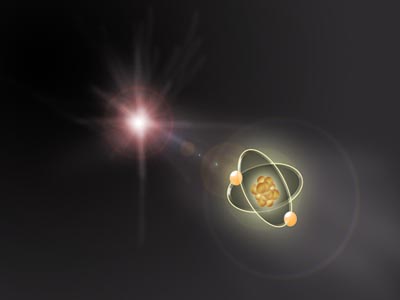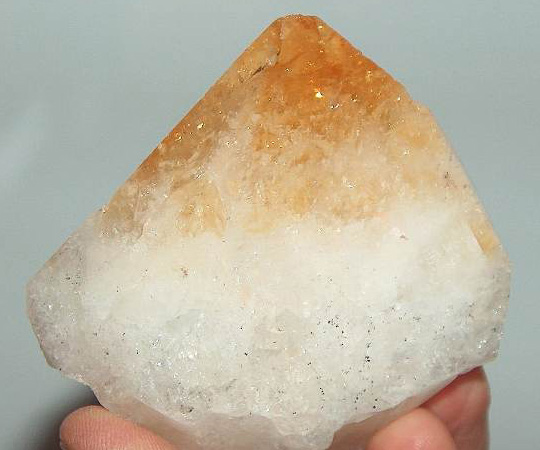
14 K Gold, Citrine, and White Topaz
Birthstones are just totally rockin’. Rock. Birth-Stone. *ahem* Bad puns aside- I’m getting really excited for November. It’s my favorite month of the year, in my favorite season, with a completely beautiful patron birth-gemstone: Citrine. Wait. What? Citrine isn’t the birthstone for November. Topaz is- Kaelin you’re wrong. Not…. completely. From ancient times, Citrine has masqueraded as Golden Topaz, which is a much more valuable gemstone, all things considered. Topaz is considered a very desirable gem because of it’s rich golden hues… much like our gemstone for today.
The problem is, that, until recently viewing a gem on a microscopic level wasn’t possible. So when miners found a small batch of stunning natural citrine, they wanted it to be Topaz. Completely understandable- and for generations, it has actually been the case that the two gems were virtually interchangeable with no-one the wiser! But when gemstones were assigned to months in the modern system as birthstones, they decided to not worry about it so much. And while Topaz is lovely, and I’ll probably write about it later this month, I like Citrine better so it gets to go first.
First off, Citrine is part of the highly extended Quartz family, and it’s just as durable as all quartzes with a hardness of 7 on the Mohs Scale. What does this mean in practical terms? Well, it’s not easily scratched, and can stand up to a fair amount of abuse, although I wouldn’t recommend driving over it with a car. Very hard on a gemstone, to do that…
But what is a quartz? The technical term is SiO2, which is silicon dioxide. When silicon dioxide forms, it does so under all sorts of conditions, in heated watery solutions (think hydrothermal vents in the ocean floor), and in certain types of solidifying igneous volcanic rock. But what differentiates between the different quartzes is what kinds of ions are present. Highly technical, I know, but there will be more pretty pictures soon! So for citrine, when it forms, there are about 40 parts of Iron per million in addition to the Silicon and the Oxygen. This is not the same as quartz having iron inlcusions, by the way. It’s actually added on the atomic level as ferric ions. I promised pictures, so here we go:

Kaelin’s Artist Rendering of Iron Ionization of Quartz turning into Citrine Molecule
Now I can already hear you asking “What’s with the funky artist’s rendering, and why should I care about any of this?” Well the truth is, aside from my enjoyment of Photoshop, understanding a little about the atomic structure is important for the next interesting fact about citrine. Very very little of readily available citrine is naturally colored. Those 40 parts per million of iron ions can turn a clear, colorless quartz crystal into the most amazing shades of pale yellow, gold, orange, and rusty brown… but it very rarely happens in nature. Instead, commercially available Citrine is usually heat treated Amethyst. Why Amethyst? Amethyst is used because it is also a member of the quartz family, and has more iron ions present in it’s atomic structure than Citrine does. And just so you know- heating Amethyst is a fully accepted practice to obtain Citrine in the jewelry world. When it is heated, the amount of iron ions is lessened, causing the stone to turn yellow in hue. Like this:
Heat Treated Amethyst Photo by Didier Descouens via Wikimedia
Beautiful isn’t it? Gorgeous color, lovely hue… But what about if you have a pendant that someone has told you is a natural citrine? How can you tell? Well, hopefully the person telling you has some form of gemology experience and you can trust them, but if not, look to see if the citrine appears to change colors. Natural citrine is naturally dichroic as well, which means that under different light, the stone could appear to be recognizably different colors. A stone may start out looking like this:
Citrine by Wela49 via Wikimedia
And may also end up looking like this sometimes depending upon the light:

Adapted from Citrine by Wela49 via Wikimedia
Now, this isn’t a fool proof method, but for the lay person who doesn’t have access to a gem-microscope, or just wants a rough idea, try putting the citrine under different kinds of light. Daylight versus incandescent, or lighting from the side, versus from the front, all those types things. Next thing is check the size. Natural citrine comes in crystals like this:
Note how small, and fractured the crystals are…. which means that large, well formed, clear Citrines are usually going to be heated Amethyst. This isn’t always the case, mind you. Large natural clear citrine crystals are found- but they are exceptionally expensive, and I didn’t find any pictures of them. I just know they exist. So if it’s large, and affordable, it’s probably heated. This doesn’t make them any less of a citrine, or a lovely gemstone, or even in any way a less desirable gemstone.
These are just some things I found interesting to know- so I’m sharing with you!
Happy Almost November!




Great article. I knew that quartz came in different flavors, but I never knew why. Here’s for heat treated amethyst. I like my stones to be natural not irradiated, but if a little heat can create a gorgeously colored large stone at an affordable price, why not…
Have you ever tried your own heat treatment (torch or kiln)?
I’ve only done it with metals myself.